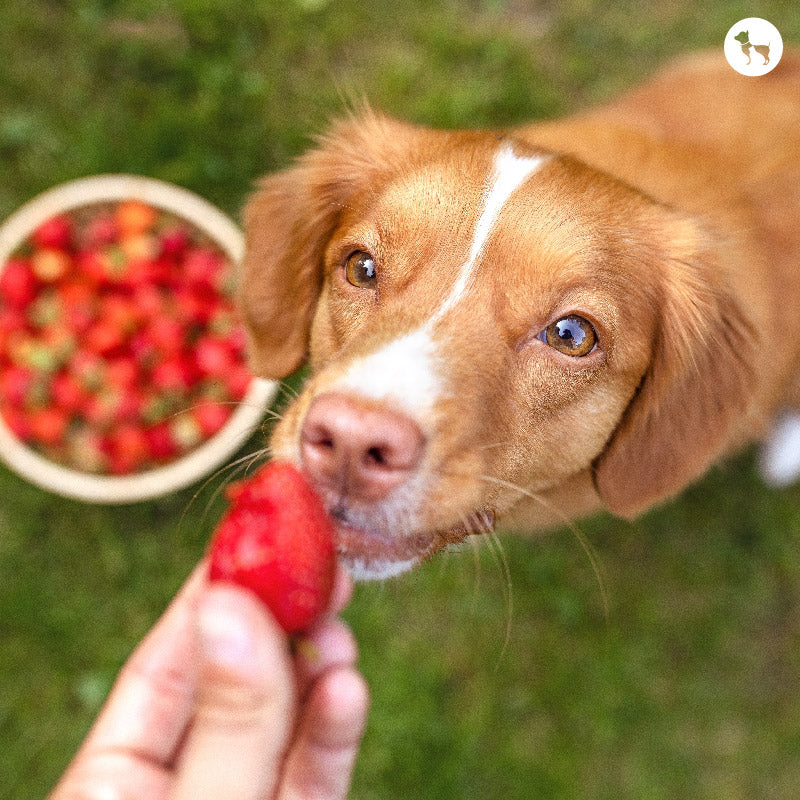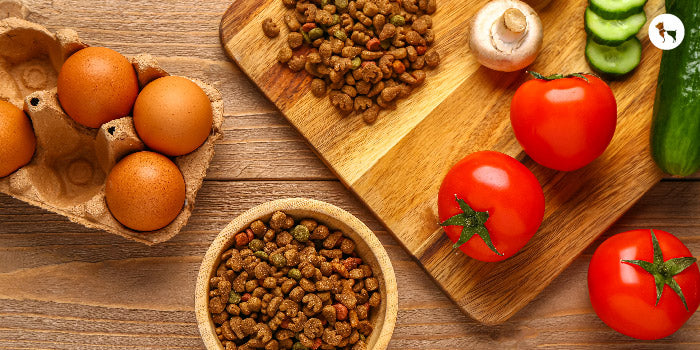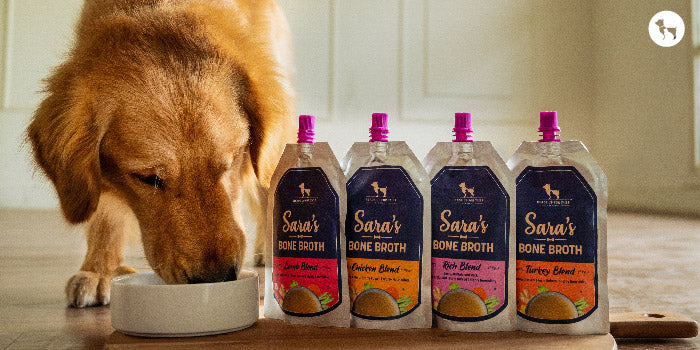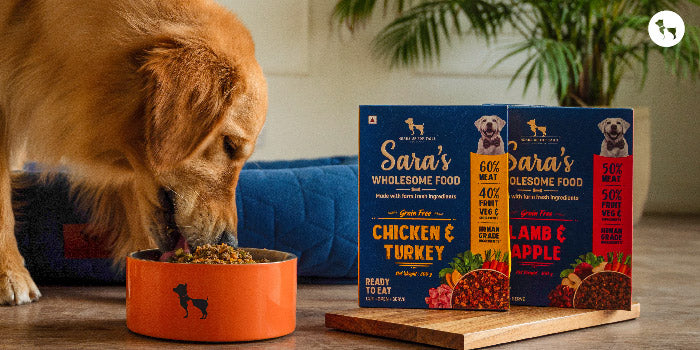
The parting of winter leaves a trail of bitterness on the tongue while the arrival of March tastes like the sweet nectar of the singing sun. And the period in-between? We fondly call it the spring, a season of renewal, the season of bitter-sweet.
Each season has its own distinct taste and the art of relishing the seasonal transitions is an acquired one. It takes long to bid goodbye to the one moving past us, and even longer to say hello to the new one. But a tried and true recipe for acclimating oneself to change is a pinch of time, a dash of patience and most importantly using the hero ingredient - building a new routine.
For our dogs, new seasons bring a change to their body-mind (a psychological term that explains the interconnectedness of a living being's psyche and body, and not treating them as separate entities). A shift in their mood, coat growth, appetite and sleeping patterns is pretty standard. Extreme summers in India are possibly the period in time they dread the most. And while transitions aren’t easy, they can be made easier with care and thought.

A good summer diet for dogs needs to be hydrating, balanced, and nutritious. There are multiple foods and recipes that can provide your dog with this, at once. As we start yet another season with our dogs, let's keep this in mind and remember our blessings of being able to create bright new summer memories with them!
On this thought, here are 8 tips to help your furry family member transition to a cheerful, belly-full summer diet as comfortably as possible:
One of the most important tips for transitioning to a new diet is to go slow. Begin by incorporating small amounts of summer foods into your dog's diet while still maintaining their winter diet. Mix a small portion of the new summer food with their current food, gradually increasing the proportion of summer food while decreasing the winter food over the course of about a week.
Pay close attention to how your dog reacts to the transition. If you see any signs of digestive upset such as diarrhoea, vomiting, or changes in appetite, slow down the transition process or consult your vet for guidance.
You’ll also want to adjust portion sizes by monitoring your dog’s weight and general condition so they receive an appropriate amount of food for their size, activity level and nutritional needs.
When the seasons transition, you’ll want to observe when it’s the hottest during the day and avoid feeding your dog during those hours. Instead, you can schedule meals during early mornings and late afternoons. Not only does this prevent overheating, but also promotes better digestion and nutrient absorption.
Another tip is to avoid feeding your dog right after they’ve had a walk or play session as this can turn their stomachs upset and increase the risk of digestive issues such as bloating. Wait till your dog has had a chance to rest and cool down before offering them a meal or a snack.
By aligning your feeding times with your dog’s natural rhythms and cooler temperatures, you can ensure they stay comfortable.

Water is an absolute MUST! You can incorporate hydration in different ways for your dog’s summer diet. Start by placing multiple bowls of room temperature water around the house in shaded areas that’s away from the sun so the water doesn’t get overheated.
Next, give your dog a balance of wet dog food and dry dog food. Typically, wet dog food has a higher water content than dry kibble, making it a great choice for keeping your dog hydrated. The moisture in wet dog food helps to maintain your dog’s fluid balance and supports overall hydration. There are many food options available in different flavours and textures to suit your dog’s taste buds!
Next on the list is bone broth for dogs. This nutrient-rich liquid is made by simmering nutritious bones in water, often added with vegetables and herbs. It’s not only delicious but also provides a significant source of hydration for your dog. Additionally, they also contain essential vitamins, minerals, and amino acids that support joint health and digestion.
Cooling summer foods for dogs like cucumber, watermelon and leafy greens are a fantastic way to keep your dog cool and hydrated. These refreshing snacks are not only packed with essential vitamins and minerals but also help boost hydration levels. And for an extra treat, whip up some cooling treats by freezing some yoghurt with dog-friendly fruits!

Apart from hydration and timing, it’s important that what your dog eats from the bowl is balanced and nutritious. While their basic nutritional needs remain the same year-round, certain foods and supplements can help support their health and well-being during warmer weathers.
Lean proteins, healthy fats and complex carbohydrates should form the foundation of your dog’s diet, promoting sustained energy and optimal body condition. Avoid inflammatory foods and opt for low-calorie foods that are ones that are lighter on the stomach.
While selecting commercial dog food, choose high-quality meals that are formulated to meet your dog’s specific nutritional needs. Look for brands that use real meat as the primary ingredient and avoid artificial additives, fillers and preservatives.
HUFT Tip: We recommend consulting your veterinarian before making any sudden changes in your dog’s usual diet.
Summer is a time for indulgence and it’s no different for our dogs! Go for snacks that are low in calories and sugar. Fresh fruits such as blueberries, strawberries, and bananas make excellent summer treats for dogs, offering a sweet and nutritious alternative to traditional dog biscuits.
In addition to fruits, consider offering your dog natural chews such as raw bones or dental sticks to help support dental health and keep them entertained. Just be sure to supervise your dog while they enjoy their treats and remove any small or sharp pieces that could pose a choking
As you adjust your dog’s feeding schedule and diet for the summer months, do monitor their health and well-being closely. Keep an eye out for any extreme changes in their appetite, energy levels or behaviour that may indicate any underlying health issues.
If your dog experiences a sudden loss in appetite or digestive issues like vomiting or diarrhoea, consult with your vet for guidance. Also, pay attention to your dog’s weight during the warmer months. Rapid or excessive weight loss could be a cause for concern.

Last but not the least, as we understand the tough transition for our pets, let’s extend the same kindness to our streeties as well. Whether it’s providing clean water in clay bowls for dogs, offering shelter from the sun or simply offering a loving word and a gentle pat, every little gesture counts for our furry beings on the streets. Let’s come together as a community so we can help them find relief from the heat and make them have a bearable summer
Transitioning your dog's diet from winter to summer foods should be done gradually to avoid digestive upset. Start by mixing small amounts of the new summer foods with their current winter diet, gradually increasing the proportion of summer food while decreasing the winter food. Monitor your dog for any signs of digestive discomfort during the transition.
It's best to feed your dog during the cooler parts of the day, such as early morning or late evening, to avoid feeding them during the hottest hours. Additionally, avoid feeding your dog immediately before or after strenuous exercise to prevent digestive issues.
Foods with higher water content are beneficial for keeping your dog hydrated and cool. Consider incorporating fresh fruits and vegetables like cucumbers, watermelon, and leafy greens into their diet. Additionally, lean proteins and foods with cooling properties, such as yoghurt, can help support your dog's health during the warmer weather.
Monitor your dog closely for any signs of illness or dehydration. Offer them fresh, enticing foods and ensure they have access to clean, cool water at all times. You can add the HUFT Food Topper or Sara’s Wholesome Bone Broth to their regular meals to increase appetite. If their appetite does not improve or if they show other concerning symptoms, consult your veterinarian for a professional evaluation.
Look for signs of healthy digestion, such as normal bowel movements and a shiny coat. If you have concerns about your dog's nutrient intake, consult with your veterinarian to discuss appropriate dietary options or supplements.
Overfeeding your dog in the summer can lead to weight gain and obesity, which can trigger heat-related issues and put additional strain on their joints and internal organs. Additionally, excessive food consumption can contribute to digestive upset and discomfort, especially in hot weather. Ensure you are feeding your dog an appropriate portion size based on their activity level and nutritional needs to prevent overfeeding.